The Search Screen allows users to search STEP data via a modern faceted search experience powered by the Elasticsearch search engine, based on criteria within the Elasticsearch configuration.
Additional information can be found in the following Web User Interfaces documentation:
-
For illustrations of results while searching, refer to the Search Screen Search Result Examples topic here.
-
For details on using the search options, refer to the Search Screen Details topic here.
-
For details on what data is available in the Search Screen, refer to the Elasticsearch Searchable Data Setup Options topic here.
-
For information on related components for use by data stewards, refer to the Data Enrichment Components topic here.
Furthermore, Elasticsearch allows for the use of full-text search capabilities for SaaS and on-premises installations, while the use of In-Memory is strongly suggested. For those with an on-premises installation and additional search options, refer to the Full Text Indexable Attributes topic in the System Setup documentation here.
Prerequisites
- Configuring this screen requires Web UI Designer basic concepts and appropriate privileges. For more information, refer to the Designer Access section of the Web User Interfaces documentation here.
- Install and configure the Elasticsearch search engine, then configure and invoke the event processor as defined in the Elasticsearch Setup topic here.
Configuration
-
In the Designer, create a new screen by selecting New. In the 'Add Screen' dialog, type 'Search' in the Filter parameter to limit the list displayed. In the Screen ID parameter create a name, select the Search Screen option, and click the Add button. In the example below, the Screen ID is named 'Search Screen' and will be selected later.
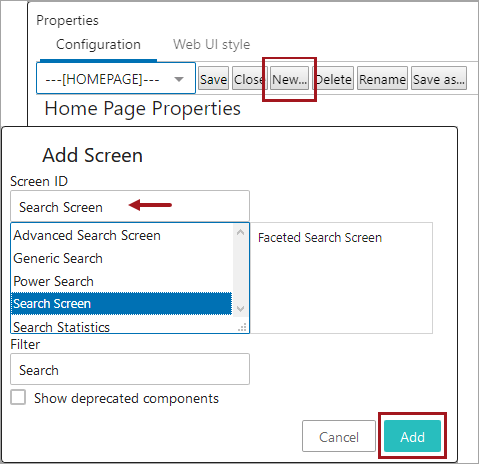
-
From the Home Page configuration screen (shown in the image below), in the Child Components section, add a Widget Grid or double-click the Widget Grid that is displayed. For more information, refer to the Adding Widgets to a Homepage topic here.
-
On the Widget Grid configuration screen (also shown in the image below), in the Child Components section Widgets field, add a Links Widget or double-click the Links Widget that is displayed. For more information, refer to the Homepage Widgets topic here.

-
On the Links Widget configuration screen (shown in the image below), in the Child Components section Rows field, click the Add button to display the Add Component dialog. Select the 'Screen Navigation' component and click the Add button.
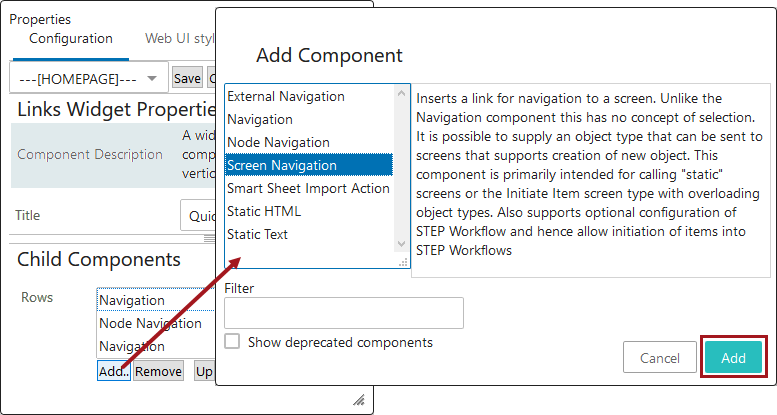
-
On the Screen Navigation configuration screen (shown in the image below), in the Screen parameter select the Search Screen created earlier in this process. Make edits to the additional parameters as desired. Click the Add button.
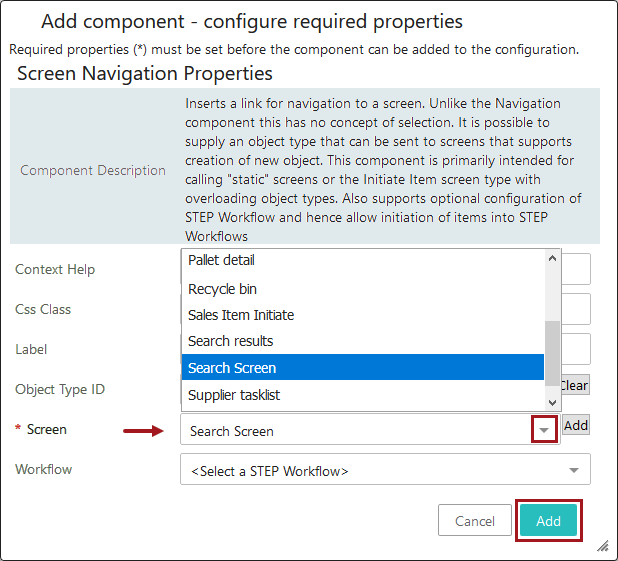
-
Click Save to confirm all selections and click Close to leave the designer.
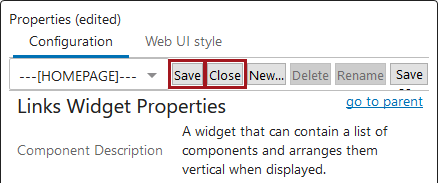
-
On the homepage, verify the new Search Screen option displayed in the Links widget.
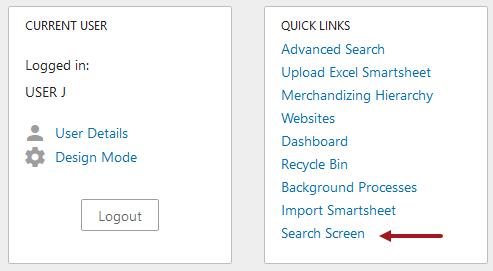
-
Update your Global Navigation Panel settings to define the search functionality per Web UI as defined in the Global Navigation Panel topic here.
-
Verify or set privileges for users who will access the Search Screen:
-
For more information on using the Search Screen, refer to the Search Screen Details topic here.